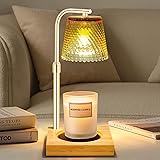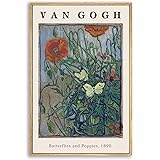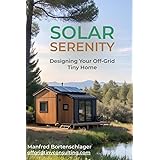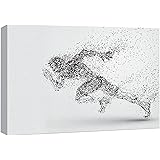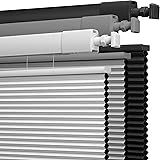The anticipation for what the new year brings in home design is always exciting, especially when it comes to the heart of the home: the kitchen. As glimpsed in the video above, Kitchen Design Trends 2025 are poised to redefine our culinary spaces, emphasizing a sophisticated blend of form and function. These emerging trends suggest a move towards more personalized, sustainable, and utterly seamless environments.
Homeowners and design enthusiasts alike are increasingly seeking spaces that not only look beautiful but also enhance daily living. The upcoming year is expected to see designs that respond to these evolving needs, ensuring kitchens are both a visual delight and a practical powerhouse.
The Art of Disappearing: Concealed Storage Solutions
One of the most prominent kitchen design trends 2025 is the widespread adoption of concealed storage. This approach is being embraced to create an exceptionally clean and uncluttered aesthetic, transforming kitchens into serene and minimalist havens.
Integrated appliances are becoming the norm, with refrigerators, dishwashers, and even microwaves being seamlessly hidden behind cabinet panels. This helps to maintain a cohesive visual flow, making the kitchen feel more like a living space than a purely utilitarian area. Thoughtful design ensures that these concealed elements are still easily accessible, often through clever push-to-open mechanisms or pocket doors that slide away.
Beyond appliances, entire pantries are being designed to disappear when not in use. Large cupboards or ‘larder units’ are being fitted with internal shelving, drawers, and even small work surfaces, allowing all cooking essentials to be tucked away. This focus on hidden functionality is proving invaluable for maintaining an organized and visually calming environment, a key aspect of modern home aesthetics.
Grounding Palettes: Embracing Earthy Tones
A significant shift in color psychology is being observed, moving away from stark whites and cool grays towards a warmer, more inviting palette. Earthy tones are becoming central to kitchen design trends 2025, fostering a sense of warmth, tranquility, and connection to nature.
Warm Hues for a Welcoming Atmosphere
Muted greens, from sage to olive, are frequently being chosen for cabinetry, bringing a calming, organic feel into the space. Similarly, warm browns, terracotta, and sandy beiges are being applied to create an inviting atmosphere. These colors are not only timeless but also incredibly versatile, complementing a wide range of materials and styles.
Strategic Application of Natural Colors
These natural color palettes are being integrated through various elements. Cabinetry in a deep forest green might be paired with a creamy beige backsplash, for instance. Countertops are often seen in stone finishes that incorporate these subtle, grounding hues, or in warm-toned quartz. The overall effect is a kitchen that feels deeply rooted and inherently soothing, providing a comfortable backdrop for daily life.
Building a Better Future: Sustainable Materials and Practices
The environmental consciousness of consumers is increasingly influencing design choices, making sustainable materials a cornerstone of kitchen design trends 2025. There is a growing demand for options that minimize environmental impact without compromising on style or durability.
Eco-Friendly Material Choices
Reclaimed wood is being repurposed for island bases, open shelving, or even flooring, bringing unique character and a story to the kitchen. Bamboo, known for its rapid growth and durability, is being utilized in cabinetry and cutting boards. Recycled glass countertops and backsplashes are offering a vibrant, eco-conscious alternative to traditional surfaces. Furthermore, low-VOC (Volatile Organic Compound) paints and finishes are being prioritized to ensure healthier indoor air quality.
Integrating Sustainable Technology
Beyond materials, the choice of appliances is also reflecting this commitment to sustainability. Energy-efficient induction cooktops, dishwashers, and refrigerators are being selected to reduce utility consumption. Water-saving faucets and integrated waste sorting systems are also becoming standard features, enabling a more environmentally responsible lifestyle within the kitchen.
Beyond Aesthetics: Functionality as a Core Principle
While visual appeal remains vital, the modern kitchen is expected to do more than just look good. Functionality is being elevated to a core design principle, ensuring that kitchens are highly efficient, adaptable, and a joy to use. The video’s emphasis on blending functionality and style perfectly encapsulates this approach.
Smart Integration and Ergonomics
Smart technology is being seamlessly integrated, not for its novelty, but for its practical benefits. Touchless faucets, smart lighting systems that adapt to time of day, and integrated charging stations are becoming common. Ergonomics are also being carefully considered; thoughtful layouts ensure that everything is within easy reach, and work zones are being designed to minimize movement and maximize efficiency. Pull-out shelves, accessible drawers, and well-organized storage solutions contribute to a highly functional space.
The Multi-Purpose Kitchen Hub
Modern kitchens are often expected to serve multiple roles – not just for cooking, but also for dining, working, and entertaining. Designs are incorporating flexible seating arrangements, such as spacious islands with seating that can double as a workstation, or banquettes that provide comfortable dining and social areas. This adaptability ensures that the kitchen remains relevant and useful throughout the day, supporting various household activities.
Tactile Experiences: The Importance of Texture and Finishes
To add depth and character beyond color, varying textures and finishes are being heavily featured in kitchen design trends 2025. This layered approach creates a richer, more engaging sensory experience within the space.
Mixing and Matching Materials
Matte finishes on cabinetry are offering a soft, contemporary look that absorbs light rather than reflecting it. This creates a sophisticated, understated elegance. These are often being paired with the natural grains of wood or the subtle veining of stone countertops. Fluted panels on island fronts or cabinet doors are adding a tactile dimension, creating interesting shadows and a bespoke feel. Ribbed glass inserts in upper cabinets are providing a hint of what’s inside while still maintaining a sense of enclosure. The interplay of smooth, rough, matte, and glossy surfaces is contributing to a visually dynamic kitchen that feels inviting and well-curated.
Illuminating Spaces: Thoughtful Lighting Strategies
Lighting is being recognized as a critical element in kitchen design, not only for practical task execution but also for setting the mood. Layered lighting strategies are therefore being meticulously planned.
Layered Illumination for Versatility
Task lighting, such as under-cabinet strips, is ensuring that workspaces are well-lit for food preparation. Ambient lighting, often provided by recessed ceiling lights or statement pendants, is contributing to the overall brightness and general atmosphere. Accent lighting, perhaps from subtle in-cabinet lights or decorative wall sconces, is being used to highlight architectural features or showcase prized dinnerware. The ability to control these layers independently, sometimes through smart lighting systems, allows the kitchen’s ambiance to be effortlessly adjusted from bright and functional to warm and intimate. These kitchen design trends 2025 highlight how a well-lit space significantly enhances both usability and aesthetic appeal.


